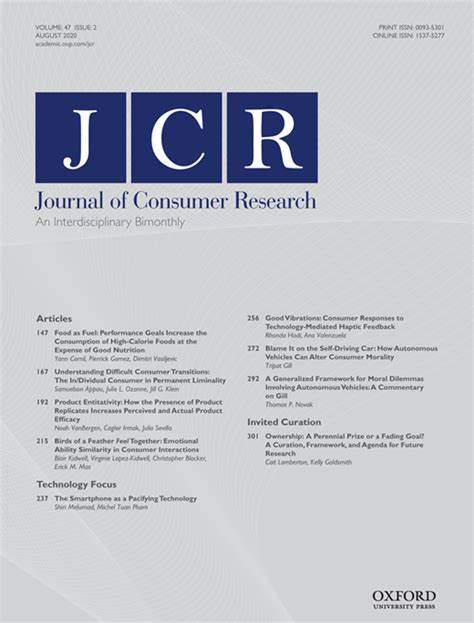The Visual Complexity = Higher Production Cost Lay Belief
IF 6.4
1区 管理学
Q1 BUSINESS
引用次数: 0
Abstract
Brands and retailers often offer different aesthetic versions of the same base product that vary from visually simple to visually complex. How should managers price these different aesthetic versions of the same base product? This research provides insights for such decisions through uncovering a novel consumer lay belief about the relationship between visual complexity and production costs. Consumers associate simple (vs. complex) visual aesthetics with lower production costs when evaluating different aesthetic versions of a product. This lay belief occurs in joint evaluation mode but is mitigated in separate evaluation mode. An important downstream implication of this lay belief is that consumers’ willingness to pay is lower for visually simple (vs. complex) versions. This gap in willingness to pay occurs even when consumers like both product versions or aesthetics equally, and it is only eliminated when consumers like the visually simple version substantially more than the complex version. Finally, reducing the diagnosticity of the lay belief by disclosing information that the two versions took similar amounts of production time and effort reduces the gap in willingness to pay between visually simple (vs. complex) versions.视觉复杂性 = 更高的生产成本 Lay Belief
品牌和零售商通常会为同一基础产品提供不同的美学版本,从视觉上简单到视觉上复杂不等。管理者应该如何为这些不同审美版本的相同基础产品定价呢?本研究通过揭示消费者对视觉复杂性与生产成本之间关系的一种新的非专业观念,为此类决策提供了启示。在评估产品的不同美学版本时,消费者会将简单(相对于复杂)的视觉美学与较低的生产成本联系起来。这种非专业信念在联合评价模式下会出现,但在单独评价模式下会减弱。这种非专业信念的一个重要下游影响是,消费者对视觉上简单(相对于复杂)的产品的支付意愿较低。这种支付意愿上的差距甚至会在消费者同样喜欢两种产品版本或美感的情况下出现,只有当消费者喜欢视觉上简单的版本远远多于复杂的版本时,这种差距才会消除。最后,通过披露两个版本花费的生产时间和精力相似这一信息来降低非专业信念的诊断性,也会缩小视觉上简单(与复杂)版本之间的支付意愿差距。
本文章由计算机程序翻译,如有差异,请以英文原文为准。
求助全文
约1分钟内获得全文
求助全文
来源期刊

Journal of Consumer Research
BUSINESS-
CiteScore
12.00
自引率
9.70%
发文量
53
期刊介绍:
Journal of Consumer Research, established in 1974, is a reputable journal that publishes high-quality empirical, theoretical, and methodological papers on a wide range of consumer research topics. The primary objective of JCR is to contribute to the advancement of understanding consumer behavior and the practice of consumer research.
To be considered for publication in JCR, a paper must make a significant contribution to the existing body of knowledge in consumer research. It should aim to build upon, deepen, or challenge previous studies in the field of consumption, while providing both conceptual and empirical evidence to support its findings.
JCR prioritizes multidisciplinary perspectives, encouraging contributions from various disciplines, methodological approaches, theoretical frameworks, and substantive problem areas. The journal aims to cater to a diverse readership base by welcoming articles derived from different orientations and paradigms.
Overall, JCR is a valuable platform for scholars and researchers to share their work and contribute to the advancement of consumer research.
 求助内容:
求助内容: 应助结果提醒方式:
应助结果提醒方式:


